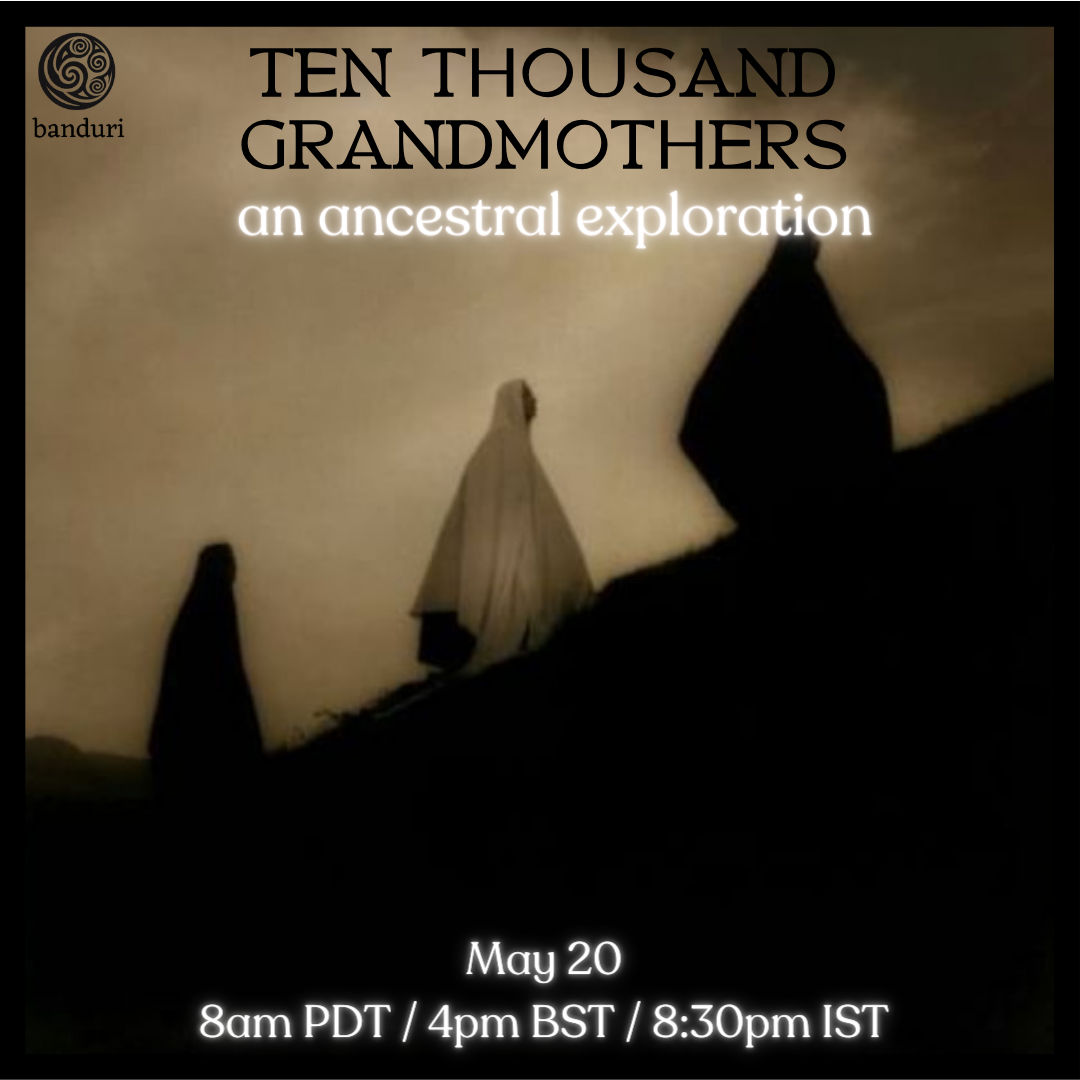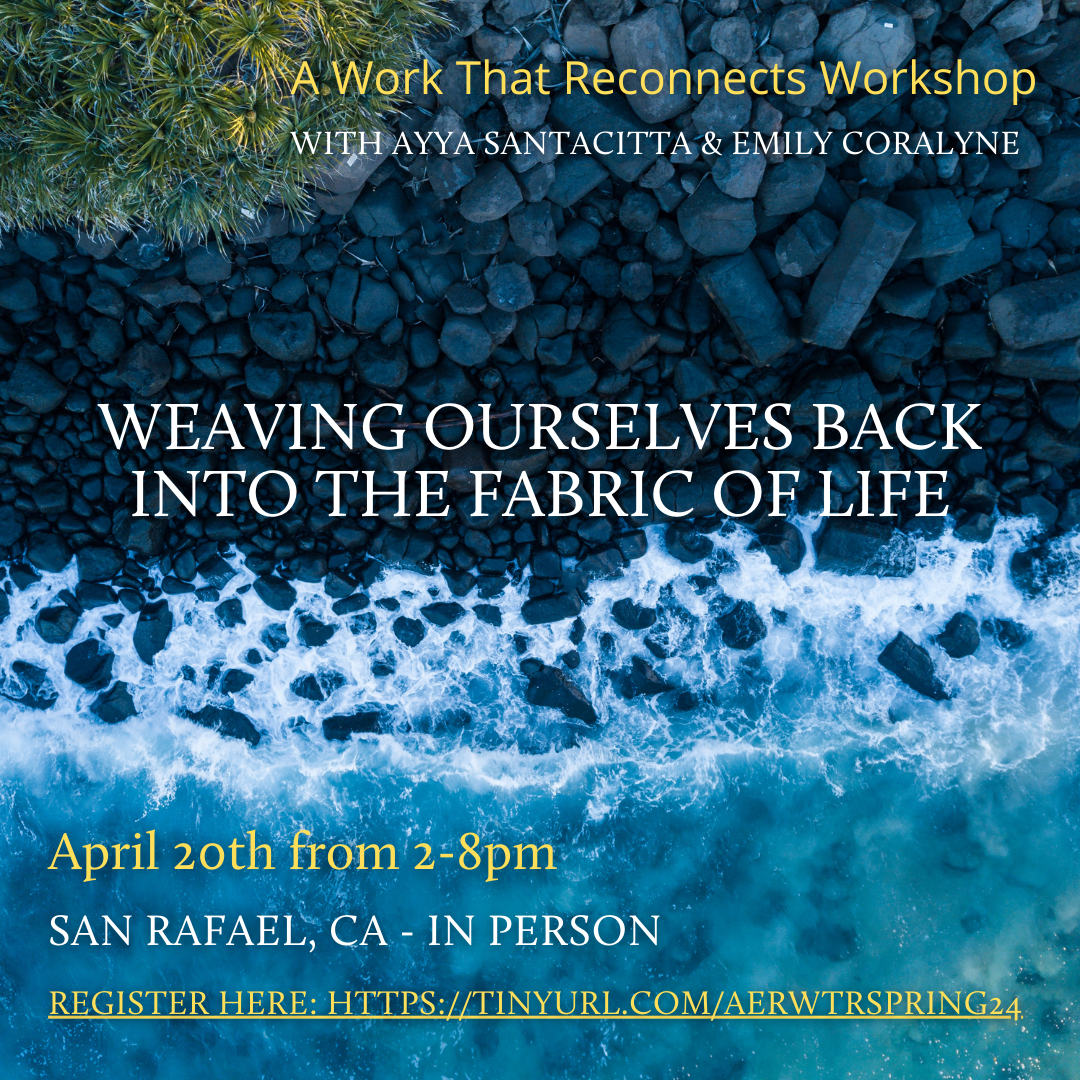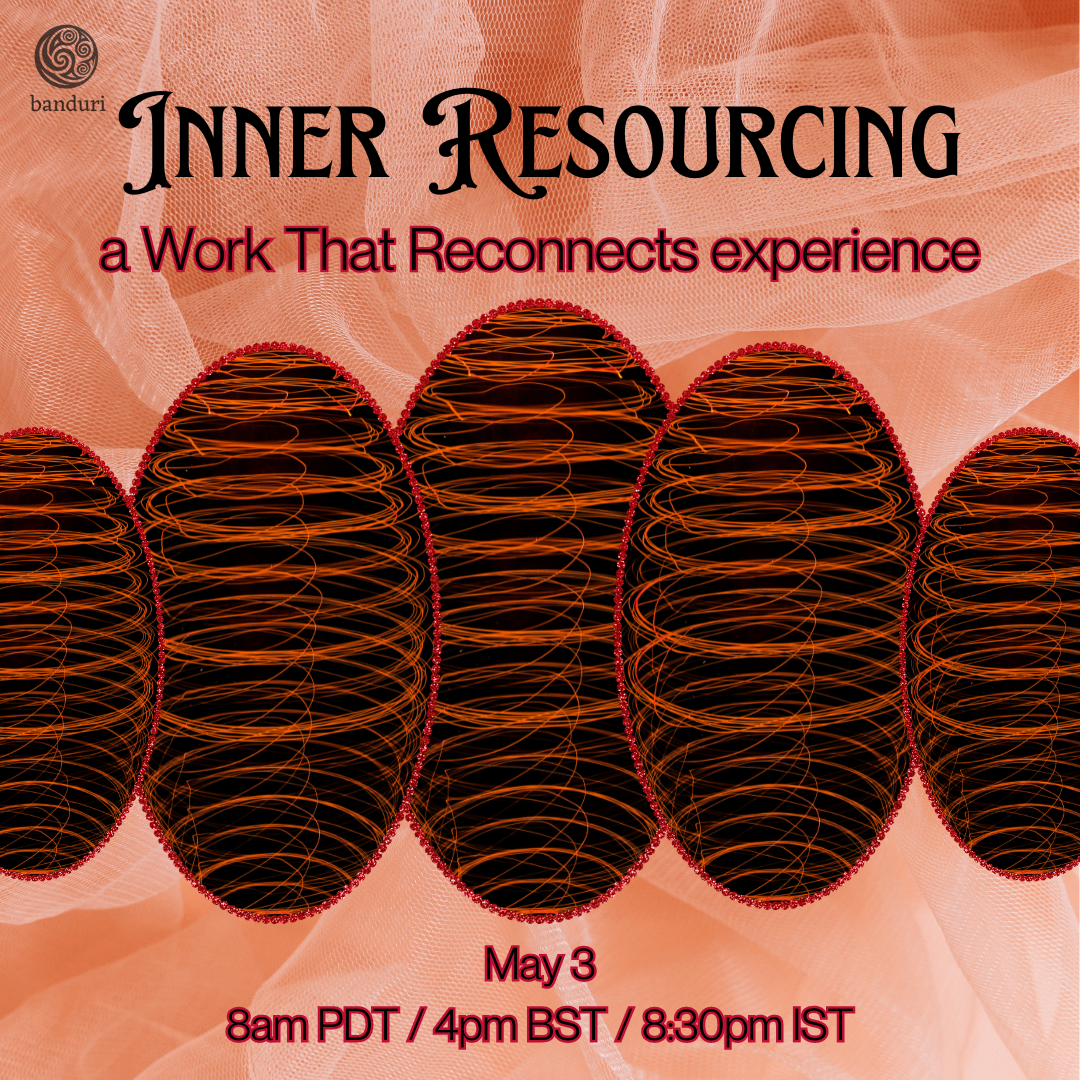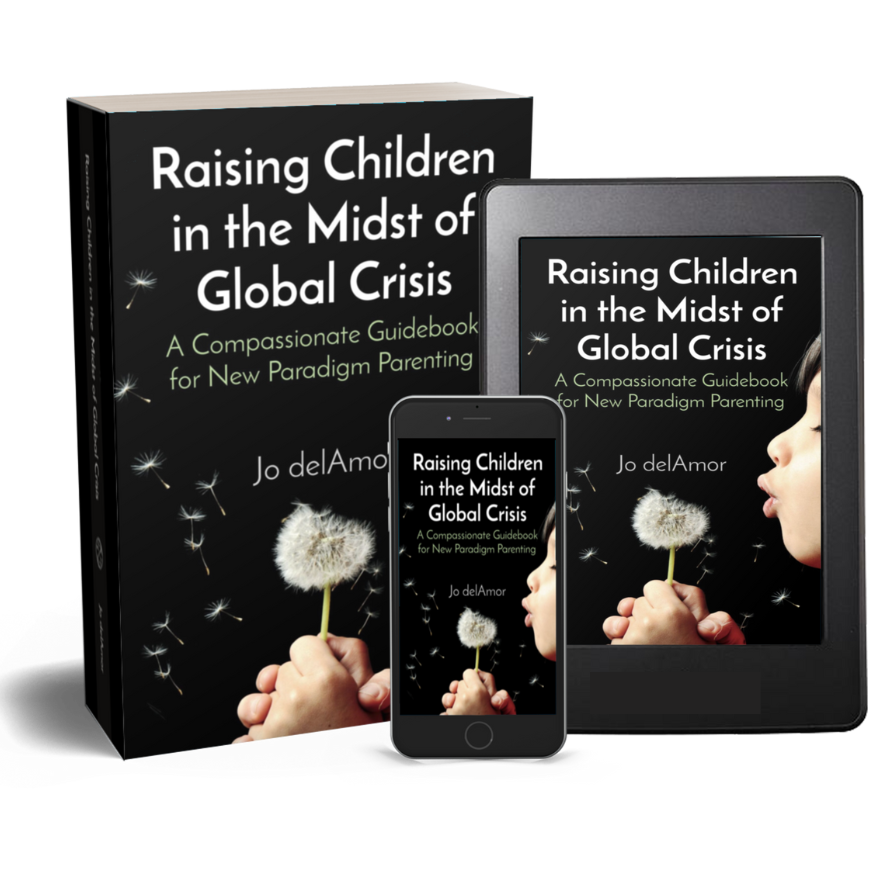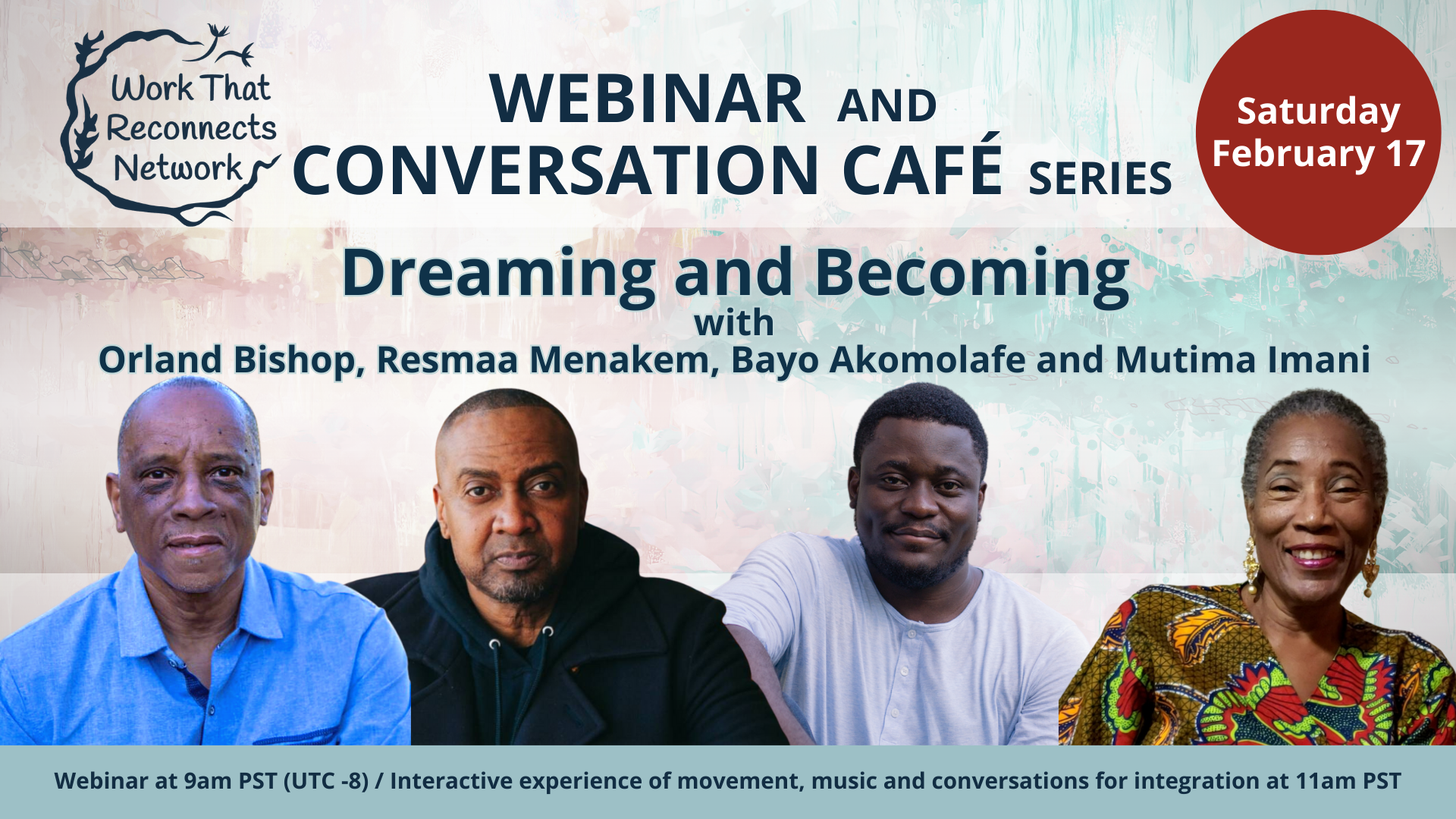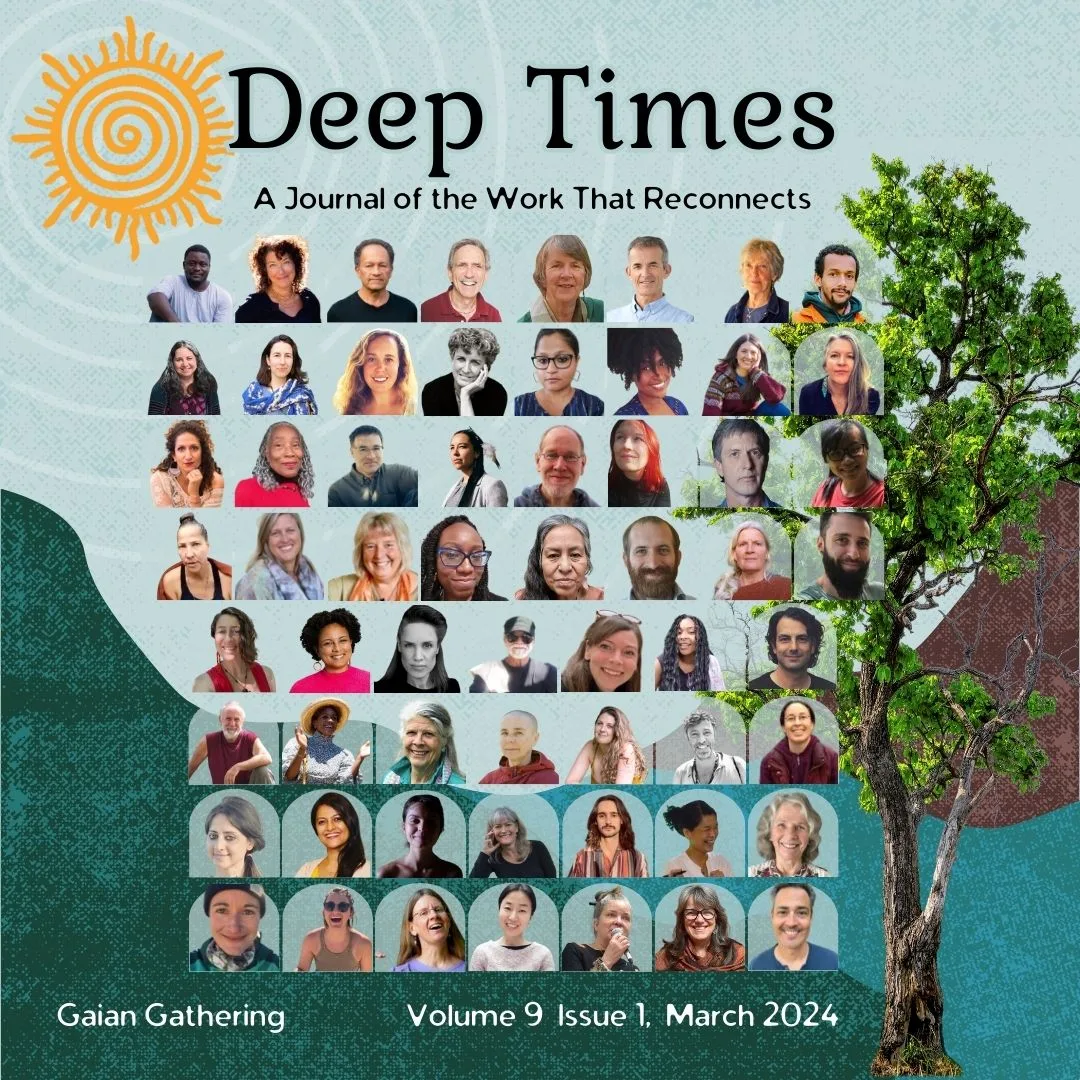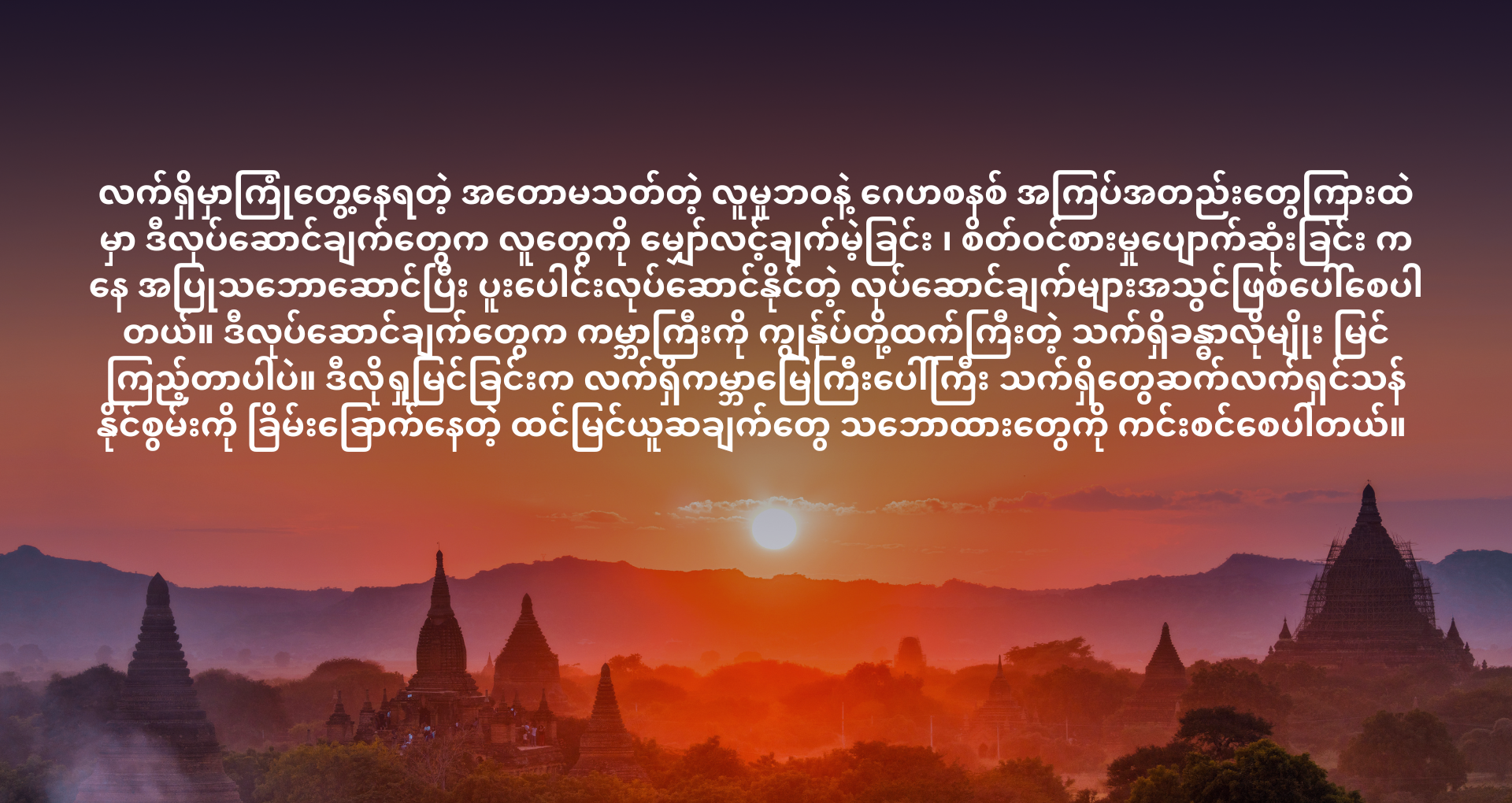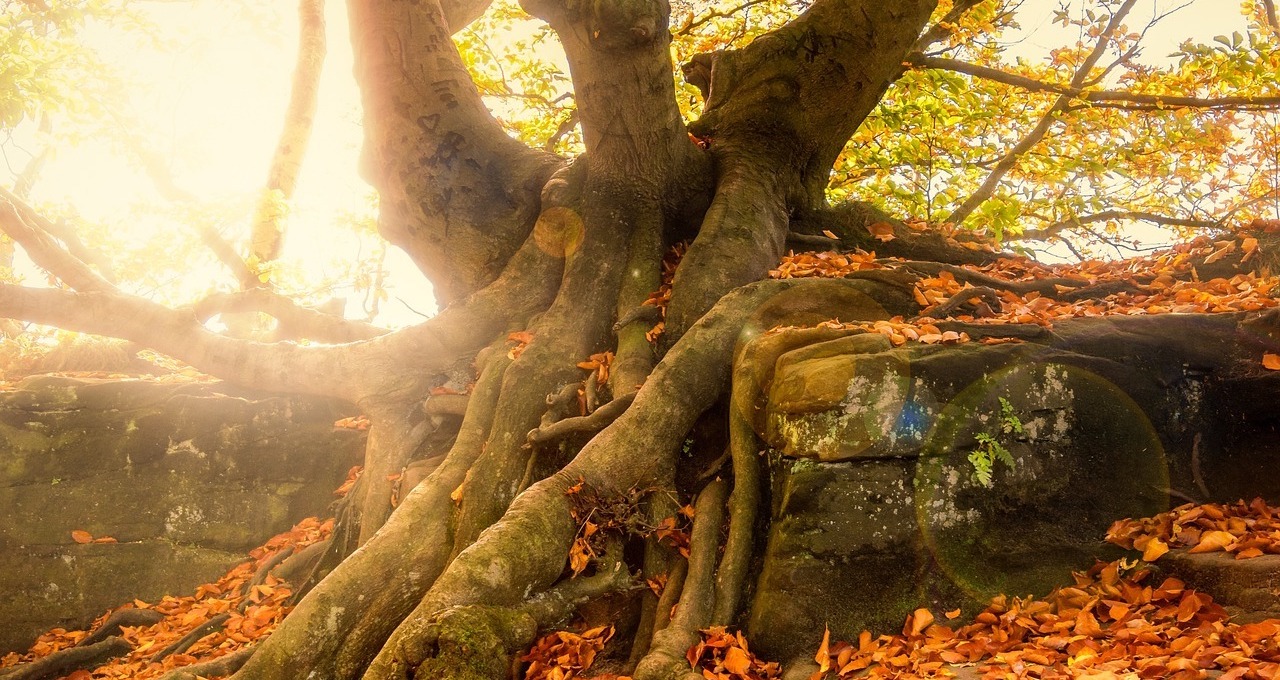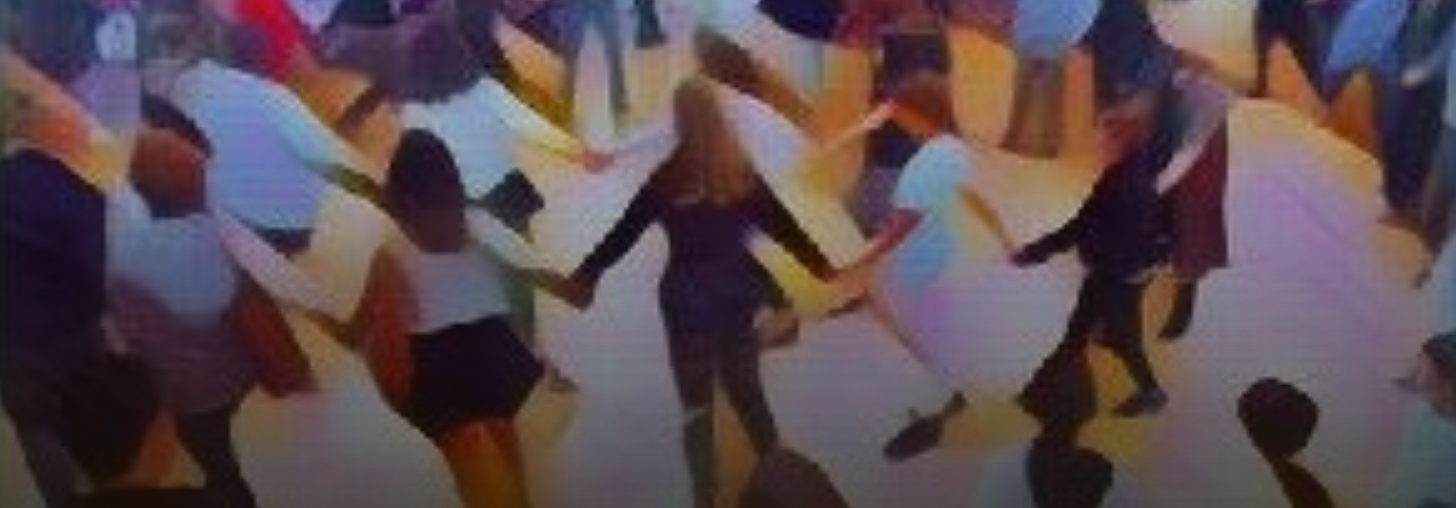- Practices
- Seeing with New/Ancient Eyes
- Living Systems/Deep Ecology
- Emerging Facilitators
- Facilitators
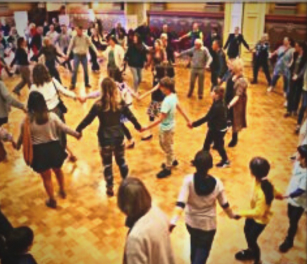
Council of All Beings
from chapter 8 of Coming Back to Life by Joanna Macy and Molly Brown; second edition, published 2014. Joanna Macy and John Seed developed the Council of All Beings ritual for rainforest activists. It is a powerful embodiment of the principles of Deep Ecology. Please acknowledge the source when you use any of these practices.
Time: 1 hour to an entire weekend
This colorful, sometimes solemn, and often lusty communal ritual allows us to step aside from our human identity and speak on behalf of other life-forms. It is excellent for growing the ecological self, for it brings a sense of our solidarity with all life, and fresh awareness of the damage wrought by one upstart species.
Following a ritual opening, participants allow themselves to be chosen by another life-form, for whom they will speak in Council. They prepare themselves to do this by reflecting on their life-form, often by making a mask to represent it, sometimes practicing moving and speaking as that life-form, and finally gathering in a formal, structured Council to speak of the grave threats faced by nearly all life-forms today.
Each Council, being the extemporaneous expression of those present, is different from all others. Each has its own character and flow. Some release torrents of intense feelings; others appear lighthearted or relatively staid. Remember that appearances can be misleading: participants who seem awkward in their roles, or relatively silent and uninvolved, can be deeply affected by the Council.
Method
Invocation. To begin the process, the guide can call upon the Beings of Three Times and perhaps the Four Directions. The blessing of the Four Directions is found in many indigenous traditions. Other ritual openings used in various traditions include smudging everyone, perhaps with cedar, sage or sweet grass smoke, and chanting. If you wish to use a ritual from a tradition that is not your own, we recommend that you seek guidance from practitioners within that tradition.
Being chosen. In this process, we imagine that other beings, other life-forms apart from humans, seek to be heard at our Council. The participants take time alone to let themselves be chosen. If time and setting permit, they walk outside for fifteen or twenty minutes. Indoors, allow three to five minutes. Ask people to relax deeply, opening their mind wide like a radar dish.
Encourage people to stay with the first impulse that arises. It is not a question of choosing a species one knows a lot about, but rather allowing oneself to be surprised by the life-form that comes, be it plant, animal, or ecological feature, such as swamp or mountain – any nonhuman being. Suggest that they visualize this being fully and from every angle, its size and shape and ways of moving. Then they request this being’s permission to enter it, so they can imaginatively sense its body from within. Finally, they ask the being how it wishes to be represented and, if masks are to be used in the Council, what symbolic form the mask can take.
Mask-making. Lay out materials (cardboard, color markers, paste, tape, scissors, string, fabric scraps, etc.) on tables or ground cloths. People may also gather their own materials from nature. A half hour should suffice; give a five-minute warning before the end of the allotted time. Everyone works without speaking. People can attach their masks with string, elastic, or by taping the mask to a stick to be held in front of the face. Be sure everyone cuts holes to see and speak through; a mask which blocks the mouth makes it hard to be heard.
Practice moving and speaking as the life-form. If time allows, this practice session helps people identify more fully with their life-form. Either or both of the following activities can help alleviate self-consciousness.
- The guide invites participants to start moving as their life-form, beginning with eyes closed.
Breathing easily, begin to let yourself feel how it is to take body in this new life form.… What shape are you? … How much space do you take up? … What is your skin or outer surface like? … How do you take notice of what is around you? … How do you move, or how are you moved by other forces? … Do you make any sounds? Play with those sounds….
- In groups of three or four, participants don their masks and practice using their human voice to speak for their adopted life-form. Each being speaks in turn for three to five minutes to their small group, introducing themselves, describing how it feels to be who they are, and naming their special strengths and qualities. Here they stay focused on their physical nature and way of life as it has been from the beginning of time (saving comments about present conditions for the Council itself).
Gathering in Council. The masked beings move to the Council ground “in character” when summoned by drum beat or animal call. When they are all in the circle, the guide, as their own adopted life form, welcomes them to this council, asking, What is Befalling our Earth and our Lives?
The guide invites each being to identify themselves. One by one around the circle, they introduce themselves in a ceremonial fashion: “I am Wolf and I speak for the wolf people.” “I am wild goose and I speak for the migratory birds.” “I am the Amazon River and I speak for the rivers of the world.” It is important that this initial roll call precede any lengthier statements.
Three stages of the Council.
- Speaking at random, the beings express the particular concerns they bring to the council.
For example: “As wild goose, I want to tell the Council that my long migrations are hard now because the wetlands are disappearing. And the shells of my eggs are so thin and brittle now, they break before my young are ready to hatch. I fear there is poison in my bones.” The Beings in the Council respond, “We hear you, wild goose.”
“As Mountain I am ancient, strong, solid, enduring. But now my forest skin is being torn off me, and my top soil washes away, my streams and rivers choke. Blasts of dynamite shatter me. I cannot care for the beings to whom I have always given refuge.” “We hear you, Mountain.” One by one they speak, and are heard. Rainforest, river, soil, wheat, badger, mouse.
- After a while, perhaps a dozen testimonies, the guide reflects that all the suffering that the beings describe seem to derive from the activities of one adolescent species.
“It would be good for humans to hear what we have to say. Let us summon them to our Council, to listen only. Would five or six of you put down your masks and move to the center to be humans?” The guide beats the drum and humans come to sit back to back in the middle, facing outwards. From now on, they are addressed directly: “Hear us, humans. This is our world, too. And we’ve been here a lot longer than you. Yet now our days are numbered because of what you are doing. Be still for once, and listen.”
The humans silently listen as the Council continues. “Oh, humans, as the Danube, I was a bearer of life. Look at what I bear now that you’ve poured your wastes and poisons into me. I am ashamed and want to stop flowing because I have become a carrier of sickness and death.” “We hear you, Danube,” say the other beings.
After a time, when more beings have spoken, the drum beats again and other humans replace the ones in the center, who return to the periphery and pick up their masks. In this fashion, everyone takes a turn to listen as a human.
- When all the beings have had a chance to address the humans and call them to account, a major shift occurs.
The guide may reflect, “For all their machines and apparent power, the humans now are frightened. They feel overwhelmed by the momentum of the forces they have unleashed. It does not serve our survival for them to panic or give up, for truly our life is in their hands. If they can awaken to their place in the web of life, they will change their ways. What strengths and gifts can each of us give them to help them now?”
Now each being has the chance to offer to the humans, and receive as a human when they come to the center, the powers that are needed to stop the destruction of the world, the strengths and gifts inherent in each life-form. Sometimes the humans break their silent listening to say simply, “Thank you.”
“As Mountain, I offer you my deep peace. Come to me at any time to rest, to dream. Without dreams, you may lose your vision and your hope. Come, too, for my strength and steadfastness whenever you need.”
“I, Condor, give you my keen far-seeing eye. Use that power to look ahead, beyond your day’s busyness, your short-term concerns.”
“I, Wild Flower, offer my fragrance and sweet face, to call you back to beauty. Take time to notice me, and I’ll let you fall in love again with life. This is my gift.”
Ending. Each Council ends a little differently, given its dynamics. Some wind up reflectively in silence. Some end intimately when everyone has joined the humans in the center to receive the gifts, and find themselves embracing and sounding together. Other Councils burst into vigorous drumming and dancing, with hoots and howls and other wild calls.
In whatever way the Council ends, a formal releasing and thanksgiving should take place. People are asked to speak to the life-forms they adopted, thanking them for the privilege of speaking for them, and then letting that identity go. Then, placing their hands and foreheads on the ground, they return the energy that has moved through them to the earth, for the healing of all beings.
Now what to do with the masks? The group may burn them in a reverent way, or compost them, or take them home to keep for a while
John Seed and Joanna Macy sometimes end with another suggestion. Participants can retain as their true identity the life-form for whom they have spoken – and put on a human “mask” (their own face) to re-enter the world.
Variations:
When time is short, or the materials are not at hand, drop the mask-making. If desired, use stick-on labels instead, on which people can draw a figure or symbol. Drop the practice sessions of movement and/or speaking in small groups.
One hour version: When time is very short, say you have just an hour, you can still offer a key feature of the Council: the chance to step aside from one’s human identity and speak on behalf of another species.
In this abbreviated form, people cluster in foursomes. Closing their eyes, they follow the guide’s suggestions on how to let themselves be chosen by another life-form. Then one by one, in their small group, they begin to speak as that being. It helps to lean forward, heads together, eyes half-closed.
Each person’s turn takes about ten minutes and covers three parts, which the guide delineates beforehand, perhaps noting them on a sheet of newsprint:
- Describe what it’s like to be this life-form, the powers and perspectives you enjoy, the relationships that nourish you and that you nourish in turn.
- Describe the disruptions and difficulties you may be experiencing now, due to loss of habitat, pollution, toxic dumping, drift nets, clearcutting, factory farming, etc.
- Since humans are causing these difficulties and abuses, and only they can correct them, consider what strengths you can offer to the humans to help them make the changes necessary to your survival – and the survival of life on Earth.
The guide, who has given a time signal for each ten-minute turn, may conclude the exercise by reflecting that the gifts each life-form has given are already present within us by virtue of the web of life. Otherwise they would not have occurred to us. When the whole group has drawn together, people may share what life-forms spoke through them, what gifts they offered, and what they discovered in the process.
Kathleen Rude led a Council with a group of 40 people. She divided the group into three “delegations.” Each delegation spoke to one of the parts described above, with each member of the delegation walking around the circle while speaking, so that everyone could see and hear clearly.
Alan Steinberg included a very brief but effective version of a Council in a conference workshop using clay. After a number of clay-working activities, he used a guided meditation to help each group member encounter another life form. Participants then had five minutes to make a clay figure representing it. Then going around the circle, each person spoke as their being, addressing the three topics listed above. Although brief, the process was moving and memorable.
Frieda Nixdorf leads Councils in an online setting. She opens the ritual before the workshop begins, inviting participants to take time in advance to be “called” by a being and arrive at the workshop as the being. Participants arrive with their cameras off and remain muted for an initial invocation and embodiment experience. Participants are then invited to rename themselves as the being and turn their cameras on. At the closing of Council participants are then invited to return to human form by honoring and expressing gratitude to the being.
